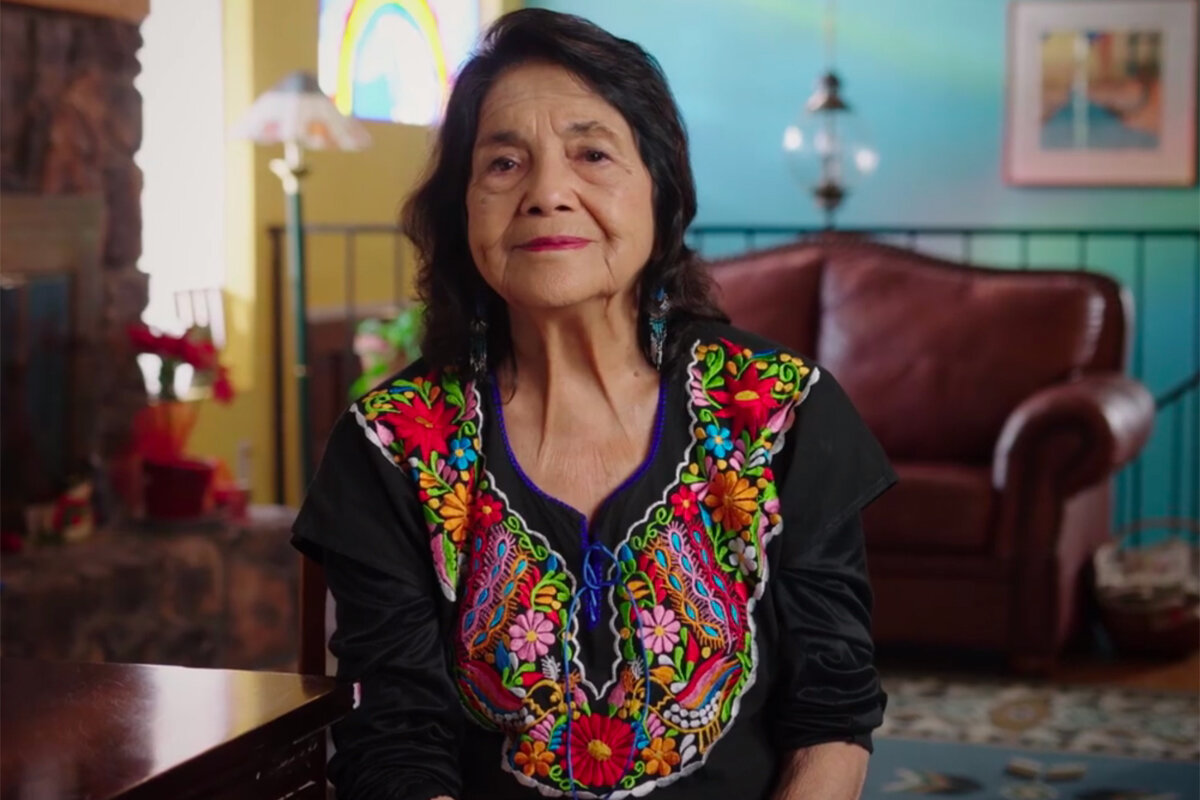Dolores Huerta Coined "Sí Se Puede,” Carrying Legacy Advocating for Farmworkers and the Downtrodden
Dolores Huerta is one of the most influential labor activists and civil rights leaders of the 20th century. As stewards facilitating this incredible project to connect SoCal and Central Valley farmers to hunger relief agencies, we are immensely humbled and inspired by the ongoing legacy of larger-than-life community organizer Dolores Huerta.
She has been involved with the farmworkers movement since the 1960s and Huerta, who worked alongside César Chávez to form the National Farmworkers Association (today United Farmworkers), remains unwavering in her devotion to improve the lives of marginalized people in California’s agricultural communities.
At 90 years old, Huerta is fearless! If you thought former President Barack Obama’s campaign slogan “Yes, We Can” was originally his doing, think again! It was Huerta’s.
As a teenager, Huerta became outraged by the racial and economic injustices she saw in the Central Valley, and eventually was a central figure in the nationwide boycott of grapes, which led to the first farmworker union contracts. At the height of the boycott, it was estimated 17 million people stopped buying grapes. First, the farmworkers were striking but that did not work, so the boycott was the next move. It lasted five years. It worked and got the union contracts signed.
Some farmworkers were afraid to fight for their rights. They would tell Dolores “no, se puede” (no, you can’t) about fighting the system.
“So my response to them was ‘sí se puede, sí se puede,” Huerta told Good Morning America last year.
From there, she teamed up with her mentor Fred Ross and Chávez to form the UFW. Farmworkers, mainly of Mexican and Filipino descent, toiled for wages as low as 70 cents an hour, in harsh conditions. They didn’t have running toilets or cold drinking water in the fields. Achieving farmworkers rights was a first in the country, and Huerta was key in fighting injustice peacefully.
Well, almost peacefully. When in San Francisco protesting former President George H.W. Bush’s false statements that pesticides were safe to use on farms, Huerta, age 58 at the time, and other activists were brutally beaten by police. She had four broken ribs and a pulverized spleen from being hit so hard by police.
After healing and spending more time with her family after 30 years of intense activism, it was from there Huerta pivoted to advocate for women’s rights. To this day Huerta knows the fight is never over.
“We’ve just got to sacrifice a little bit to make our world a better place,” she says.
We’re thrilled to highlight the work of Huerta and more incredible, pioneering leaders during Women's History Month! We’re in awe as we learn about the work of great leaders like Huerta. Let their vision inspire you to accomplish the change you want to see in the world, and in our mission, food justice!
Learn more:
Civil Eats: Dolores Huerta is Still Fighting for Farmworkers’ Rights
Dolores Huerta on Good Morning America
National Women’s History Museum
NPR: Dolores Huerta: The Civil Rights Icon Who Showed Farmworkers 'Sí Se Puede'



